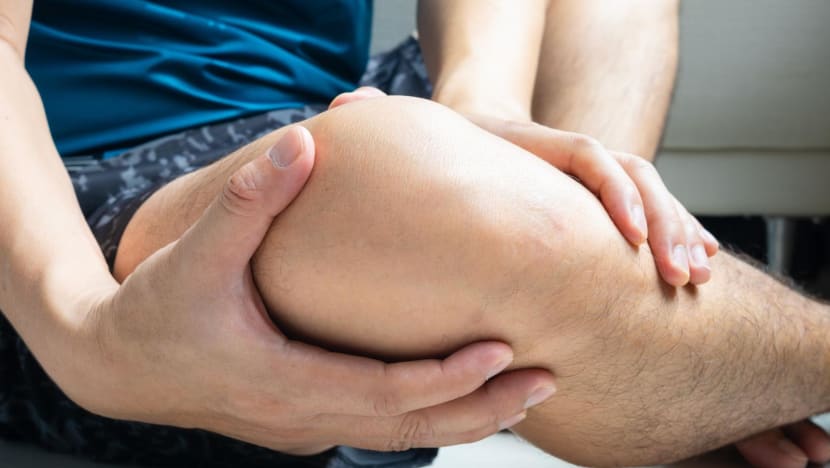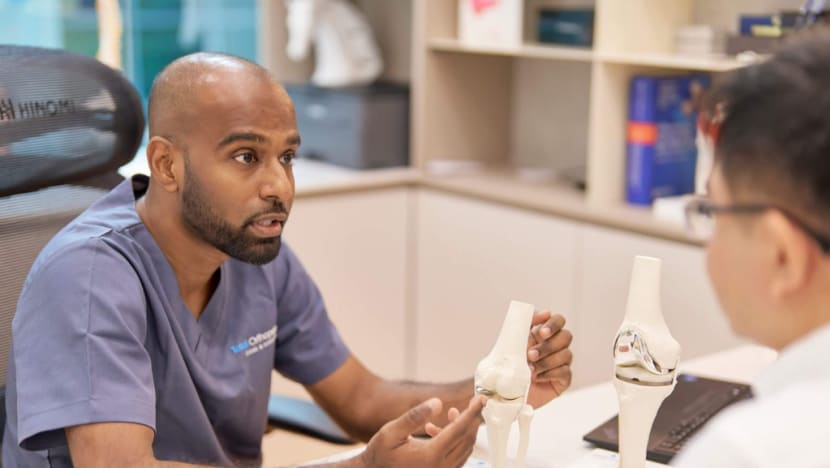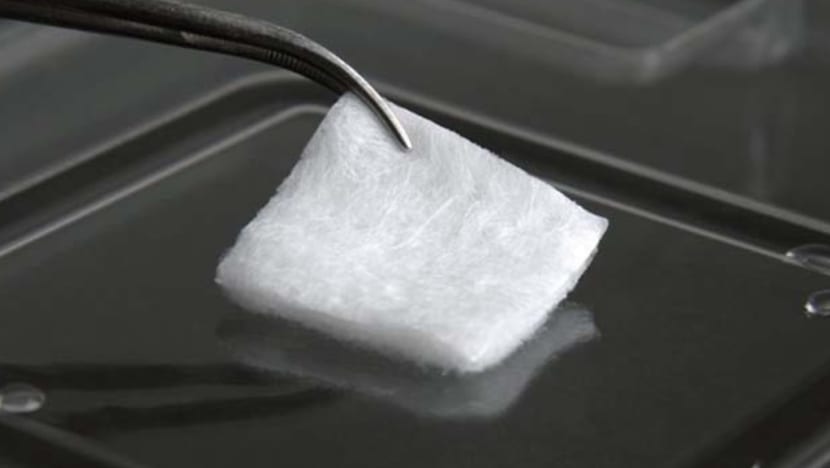Understanding cartilage repair and its role in knee health
An orthopaedic surgeon discusses how this approach helps alleviate pain caused by joint injuries and chronic conditions.

Knee pain can impact one's quality of life, with treatment options ranging from lifestyle adjustments to targeted medical procedures. Photos: Shutterstock, Wellchem Pharmaceuticals

This audio is generated by an AI tool.
Knee pain is a common condition that can affect mobility and overall well-being, often stemming from sports injuries or chronic conditions like osteoarthritis that develop over time. Depending on the patient’s profile and the severity of the knee condition, treatment approaches range from lifestyle changes and low-level interventions – including weight management, physiotherapy and mild painkillers – to more advanced procedures.
“For moderate cases, treatments such as platelet-rich plasma or hyaluronic acid injections can help reduce pain and promote healing,” said Dr Hamid Razak, a consultant orthopaedic surgeon at Total Orthopaedic Care & Surgery.
In other instances, patients may require surgical procedures such as cartilage repair, meniscus repair or realignment of the knee joint, known as an osteotomy. Total knee replacement, said Dr Hamid, is reserved for cases when other treatments are no longer effective.
CARTILAGE REPAIR, EXPLAINED
Among surgical options, cartilage repair is recognised for its role in restoring the knee’s natural function. Specialists like Dr Hamid tailor this treatment based on factors such as size, location and condition of the cartilage defect.
“Cartilage repair focuses on addressing the damaged surface of the knee joint, improving its natural cushioning and smoothness,” he said. “It’s similar to patching a worn-out tyre to ensure a smooth ride. Early intervention not only prevents further deterioration but also relieves pain caused by exposed bone rubbing against bone.”
There are various techniques for cartilage repair. These range from hyaluronic acid-based scaffolds that support cartilage regeneration to allograft osteochondral plugs, where healthy donor cartilage and bone are used to repair damaged areas. In some cases, these approaches are enhanced with ortho-biologic products (substances that promote tissue healing), such as bone marrow aspirate concentrate and mesenchymal stem cells.
IS CARTILAGE REPAIR SUITABLE FOR YOU

Cartilage repair is generally most effective for younger, active patients with well-aligned, stable knees and healthy meniscus tissue. However, as more older adults adopt active lifestyles, age is becoming less of a limitation for the procedure.
“I recently treated a 60-year-old badminton enthusiast who chose cartilage repair over total knee replacement,” shared Dr Hamid. “With proper alignment and stable ligaments, he was able to return to his favourite sport with ease.”
This technique can also benefit athletes aiming to resume their routines. Dr Hamid recalls treating an athlete in his mid-20s who returned to his sport nine months after undergoing cartilage repair using a hyaluronic acid-based scaffold combined with mesenchymal stem cells, which play a pivotal role in cartilage regeneration.
“The stem cells act as a repair crew,” said Dr Hamid. “The scaffold serves as their ‘home base’, anchoring them at the damaged site, where they transform into cartilage-producing cells to restore hyaline-like cartilage that mimics the joint’s natural cartilage in appearance and function.”
AN OVERVIEW OF HYALURONIC ACID-BASED SCAFFOLDS

Unlike metal implants or total knee replacements, hyaluronic acid-based scaffolds support new cartilage growth while preserving the knee’s natural structure. They may also reduce the risk of biofilm-related infections – hard-to-treat bacterial infections that form a resistant layer – one of the leading causes for implant failure.
Dr Hamid uses autologous minced cartilage together with hyaluronic acid-based scaffolds to improve both the quality and durability of the procedure. “This augments cartilage repair by utilising the patient’s healthy cartilage surrounding the defect as a source of viable cartilage cells,” he said.
According to Dr Hamid, hyaluronic acid-based scaffolds have been widely used by orthopaedic surgeons globally for over a decade. Free of animal by-products, they are suitable for most patients, including Muslims, vegetarians and vegans.
He explained that cartilage repair using hyaluronic acid is typically performed through minimally invasive procedures like arthroscopy (keyhole surgery), which minimises tissue damage, supports faster recovery and enables patients to return home within a day or two.
“Most patients can resume light activities within weeks,” Dr Hamid said, adding that physiotherapy – crucial for optimal healing – can begin almost immediately. While high-impact activities like running or jumping should be avoided for at least three to six months post-surgery, a personalised rehabilitation plan developed with a physiotherapist aids recovery during this period.
Dr Hamid also highlighted that cartilage repair using hyaluronic acid could lower the chances of requiring complex revision surgeries.
“Younger patients undergoing total knee replacements face a high risk of revision, as noted in a study in The Lancet,” he said. “Biocompatible scaffolds provide an alternative by addressing cartilage damage early, which could delay or eliminate the need for total knee replacement.”
Dr Hamid advises patients to consult an orthopaedic specialist to determine if hyaluronic acid-based scaffolds are a suitable option: “This treatment can be effective in many cases, though it is important to consider each case individually. Early intervention is key to managing knee issues and optimising results.”
Explore these orthopaedic treatment options.















